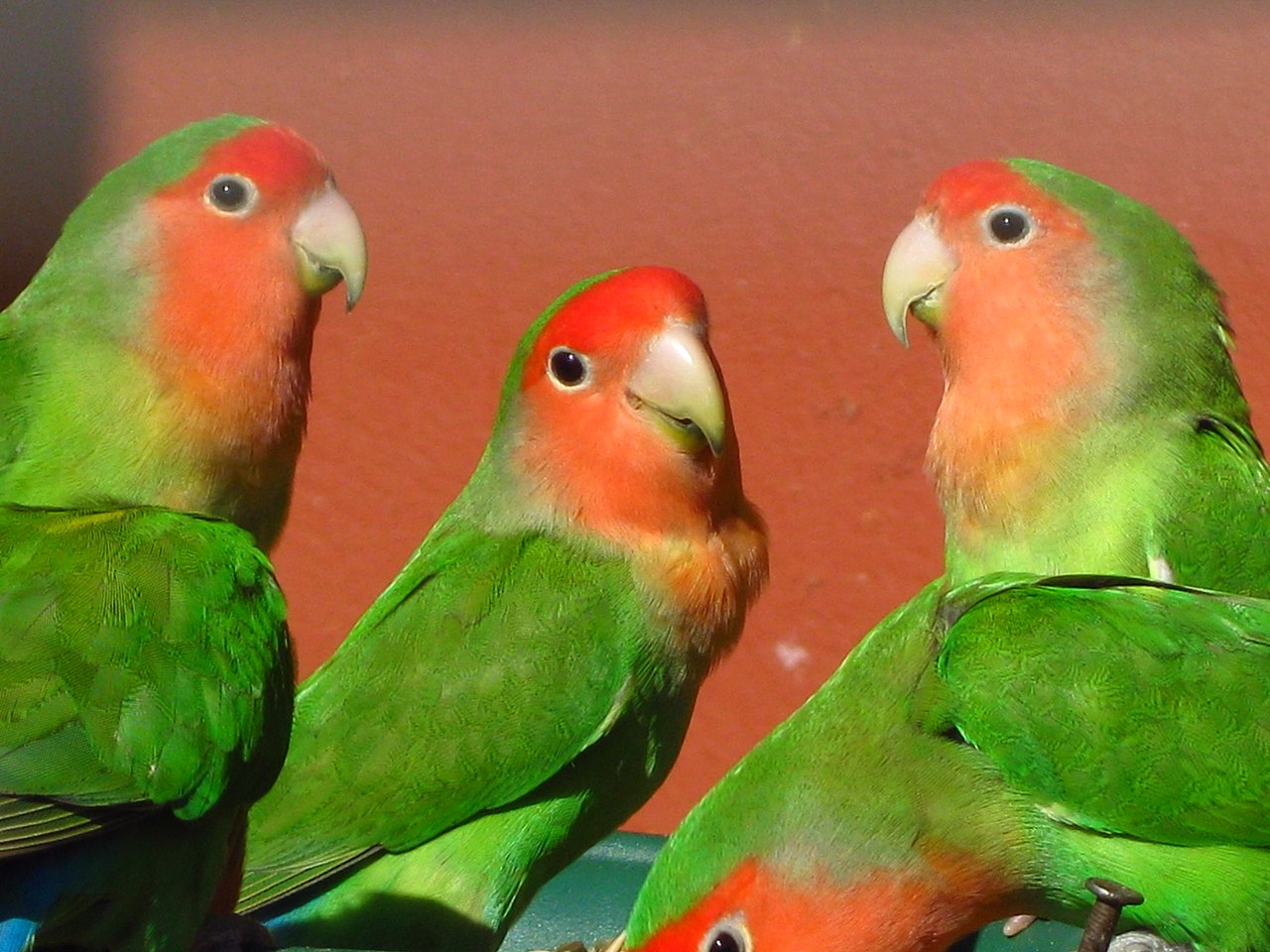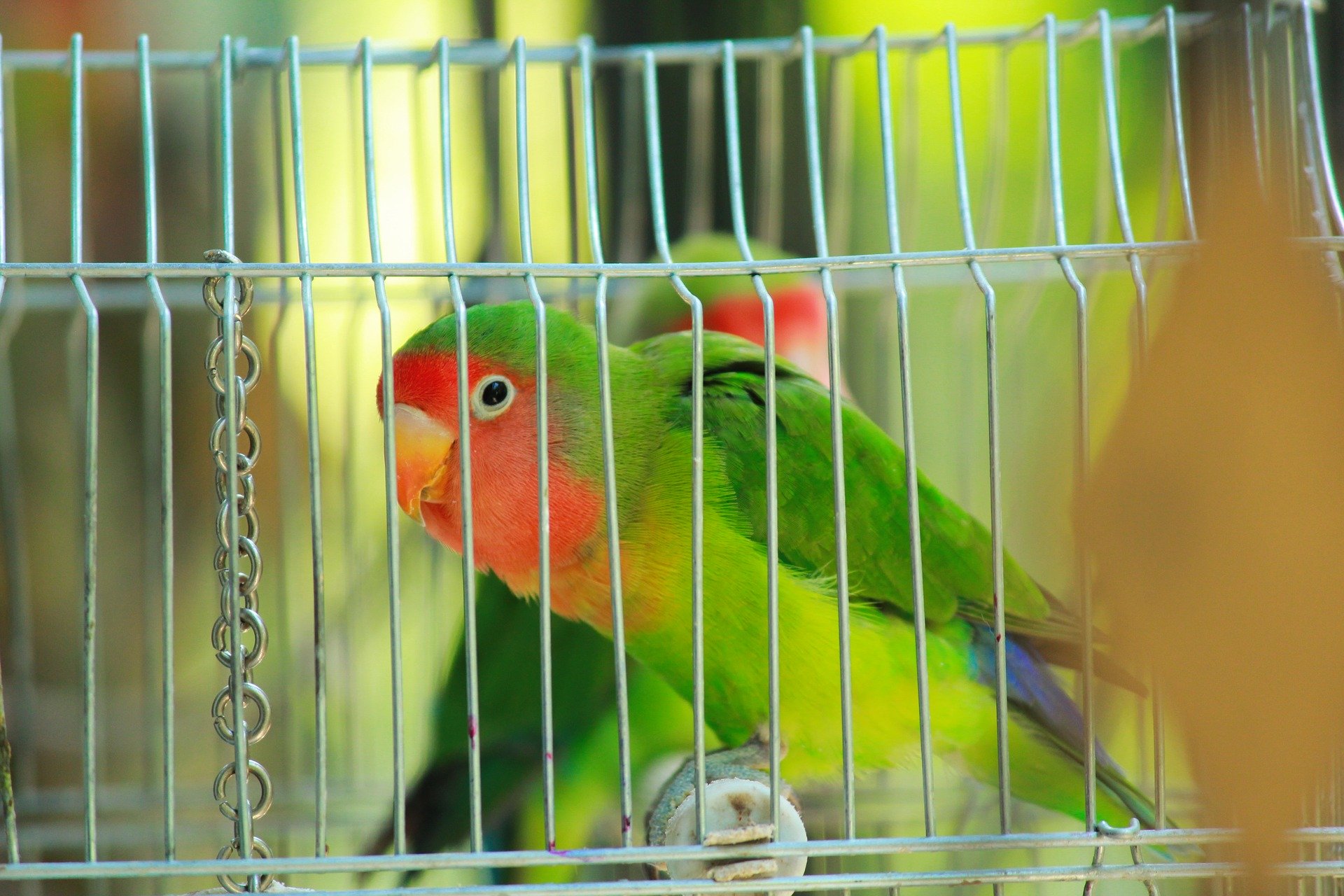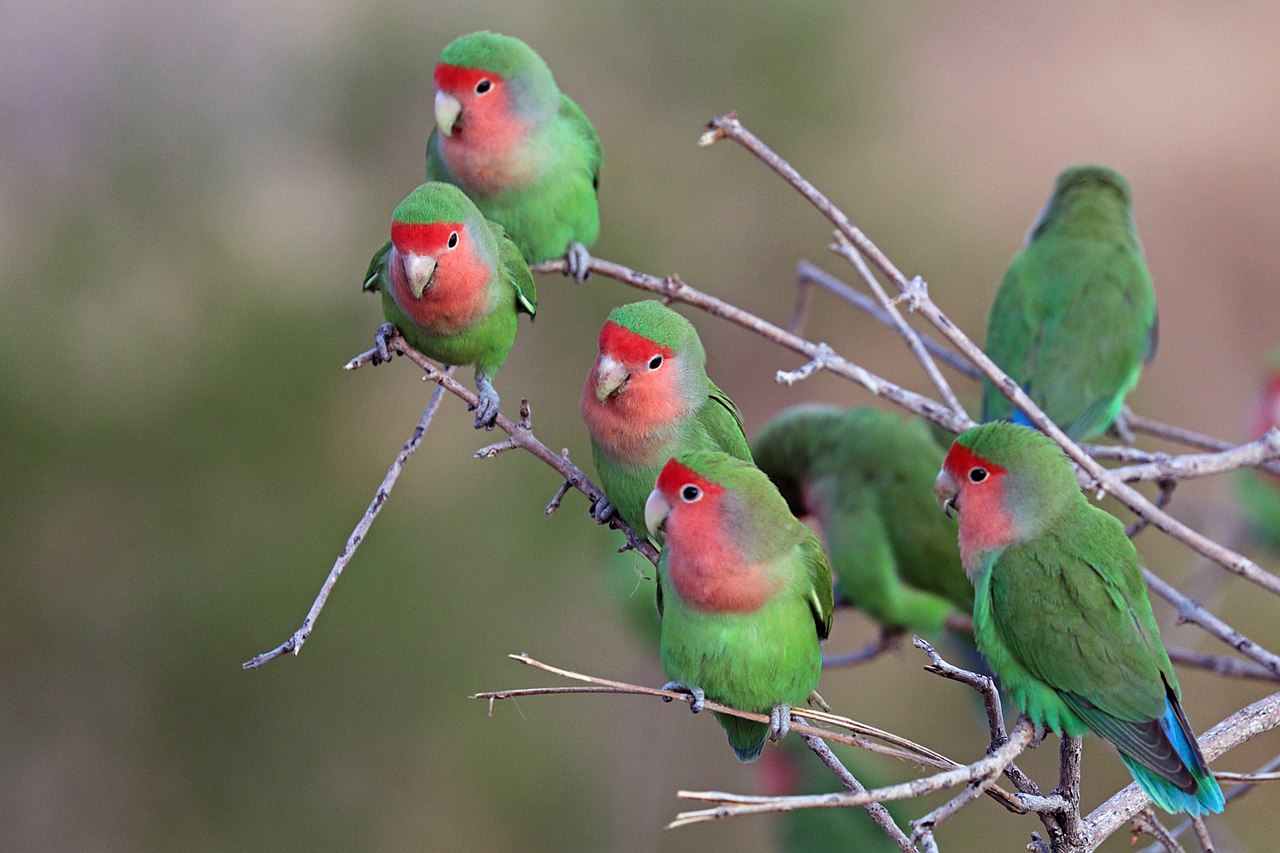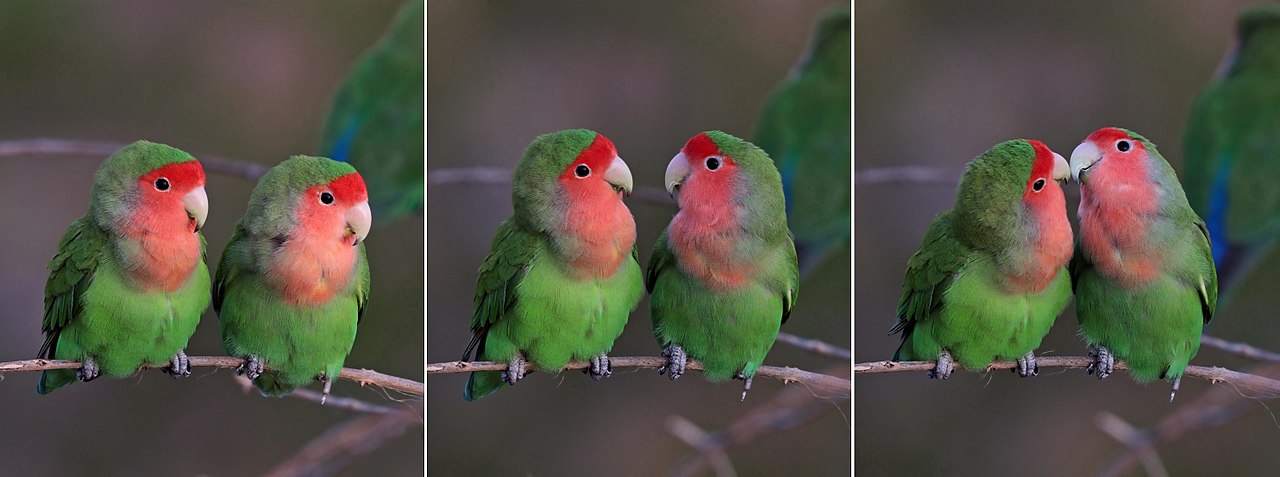The roseicollis lovebird is one of the birds that is currently in fashion as a pet. Very intelligent, sociable and brightly colored animal, it has become a substitute for parakeets in many homes.
But How is the roseicollis lovebird? Today we will tell you everything about this animal: where it lives, the care it needs, its reproduction...
How is the roseicollis lovebird
The roseicollis lovebird is also known as Inseparable from Namibia. These are birds about 15 centimeters tall and about 50 grams in weight. In general, they have a green body with a pink head, but due to the mutations that exist in this parrot, you can find it in multiple colors.. As for the beak, it is off-white, although some mutations have it in pastel blue or yellow.
Their legs are quite strong and not only are they good for walking, they can also use them to manipulate objects, aided by their beak, which is very strong (capable of splitting things or inflicting injuries if you're not careful and it stings strongly).
[related url=»https://infoanimales.net/agapornis/agapornis-papilleros/»]
Both the male and the female are practically the same. In fact, many breeders say that sometimes the pelvic bones are further apart in females, but this can be misleading and they always recommend doing a DNA test to find out for sure.
The behavior of the roseicollis lovebird
The roseicollis lovebird is a very sociable bird. It is very cheerful and loves to be with other lovebirds, but it also tolerates humans very well, becoming one of the birds (they see it as such). It is also very smart, Therefore, with some patience and perseverance, they are able to learn tricks or games to entertain themselves.
Habitat
The roseicollis lovebird is a bird native to southwestern Africa. They are common birds there, along with other types of lovebirds that nest and are part of the African sky. One of the places where you can see them is the Namibian desert.
[related url=»https://infoanimales.net/agapornis/agaporni-personata/»]
They live mainly in the driest areas, close to deserts, but they always need a source of water. In addition, except during the breeding season, at other times they do not always stay in a fixed place, but form flocks that go from one place to another (wandering).
Despite this, they are animals that adapt easily to environments, and it is the reason why they can be kept as a pet in many environments.
Roseicollis lovebird care in captivity
Discover all the care you should provide to your roseicollis lovebird in captivity.
The cage
Let's start with the cage of the roseicollis lovebird. This has to be quite wide, not so much in width, as in height. The bars are better to be vertical than horizontal, because they will tend to bite and bite and can, depending on the material of the cage, break them.
In addition, the doors of the cage must have "security". And it is that the lovebirds pay close attention to the movements you make when opening the cage, and they easily learn to open it, so, to prevent it from escaping, or leaving the cage whenever it wants, you may need to put a safe (a wire so you can't open it or something similar).
The game
The roseicollis lovebird is a very energetic animal, and for this reason it needs to be Provide games or toys inside their cage (if it's big enough). For example, he loves to hang at different heights, or climb ropes.
Also, keep in mind that if this animal does not receive stimuli, it will begin a somewhat shrill song. What he really wants with this is that you pay attention to him since, the moment you get closer, he will stop doing it and what he will want is to play with you. It will depend on whether the lovebird is trained or wild so that you can take it out of the cage and play with it, or you must do it from the cage itself.
Feeding of the roseicollis lovebird
The diet of the roseicollis lovebird depends on the state it is in, and also on how we have raised it. Thus, you can find:
- Hand-reared Agapornis roseicollis (breeding): in this case, they will need to eat a porridge that is the basis of their diet. This will give it the necessary nutrients to grow.
- Agapornis roseicollis breeding: In the event that the parents are the ones who raise their children, the food will be borne by the parents, who will be in charge of eating and regurgitating the food to give it to the little ones.
- Agapornis roseicollis adult: When they are adults, their diet is passed on seeds and seeds, but one of the main ones is white (or black) millet. However, they should also be given moist foods, such as fruits, vegetables... In the case of females, a calcium intake is essential, especially during the reproductive season since, in this way, they do not become weak or have problems with time to expel the eggs (which can be dangerous for your life).
- Agapornis roseicollis adult (hand reared): Their diet is exactly the same as the previous one, but, in the transition between porridge and usual food, they have to go through a season of panizo, which is a softer millet that helps them get used to the seeds, learn to break them , etc.
The reproduction of the lovebird roseicollis
The roseicollis lovebird is one of the easiest birds to reproduce in captivity. But they will only do that if you provide them with a nest and so-called "goat hair" for them to build. If you don't, no matter how much they lay eggs, the most likely thing is that they are not "trodden on", that is, they do not carry young.
In their natural habitat, it is the female who is in charge of preparing the nest, collecting pieces of bark, small branches, plantain stems... Once it is done, usually in crevices or occupying nests left by other birds, mating takes place.
La female lays between 3 and 6 eggs, one each day, since it does not put them all at once. He usually does it first thing in the morning. This causes the birds to hatch one day apart, after about 22 days. At a month or a month and a half, these hatchlings begin to have plumage and, at two months, they will be fully adults.
In captivity, reproduction is very similar. It will be the female, together with the male on some occasions, who will make the nest (if you provide her with goat hair), and mating will take place, which will cause the female to leave between 3 and 6 eggs. Normally these are good, and will have a baby inside, but sometimes it may not be so. After 22-25 days the young will begin to be born and the parents will take care of them until, at approximately 45 days, they leave the nest to explore and begin to eat on their own.
It may be the case that parents, or siblings, throw a young from the nest. If it's okay, and it's not too small, you can try turning it into a papillero lovebird, that is, hand-rearing it.



